10 Best Herbs to Grow & Why You Should Plant Them This Year
Want to know the 10 Best Herbs to Grow and Why? It’s time to start planting, and herbs are easy to grow, save you money, and make for a beautiful garden. In this article, you’ll learn which herbs are annuals, which are perennial, and most importantly, how to preserve herbs for off-season enjoyment. You’ll also learn tips on how to use your herbs for more than just spices.
In addition, which herbs are beautiful additions to your landscape? Why are these my favorite herbs? How do you use them?
I’ve shared that I’m a wannabe gardener; however, I have had success growing herbs. They are so easy to plant and take care of. Herbs make a great addition to any garden, large or small.
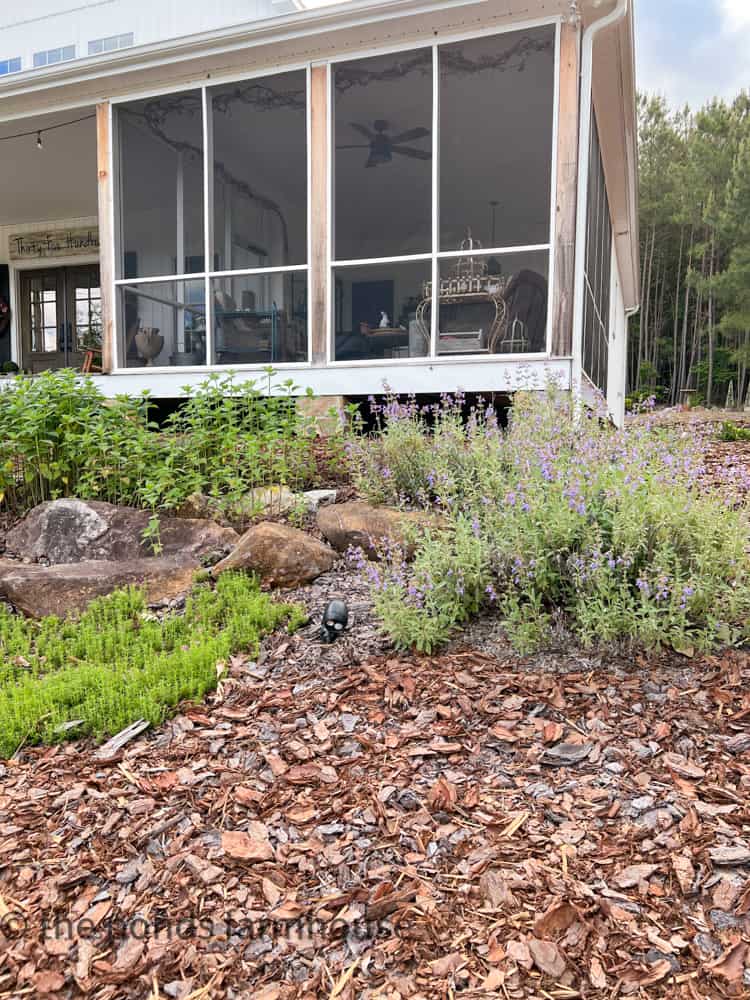
Table of contents
(Posts on The Ponds Farmhouse may contain affiliate links. As an Amazon Associate, I earn from qualifying purchases. See the full disclosure details here.)
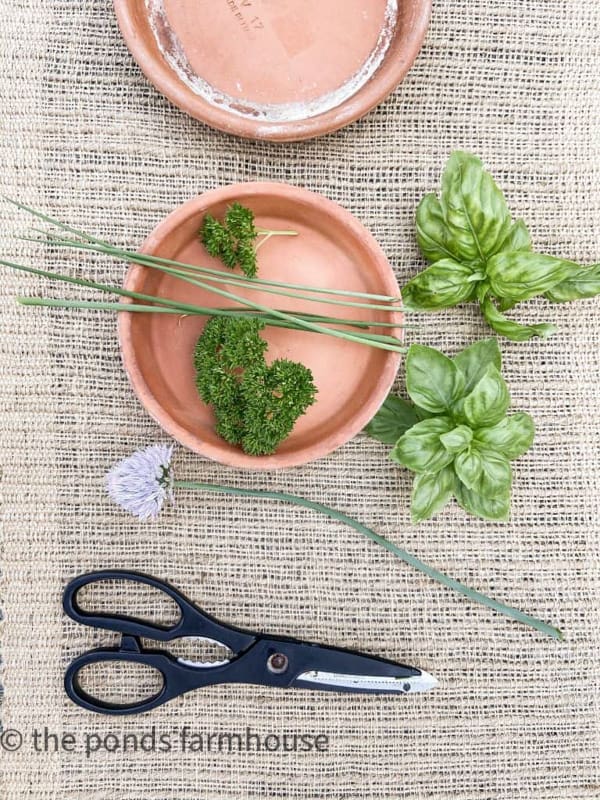
Why Should You Grow Herbs?
If you are interested in growing herbs, there are many different ways to do it. You can grow herbs in your garden, in containers on your patio, or even indoors on a windowsill. You can mix them into your landscape, and you’ll love the results. No matter how you choose to grow them, you will save money on your spices.
I found these pieces of green enamelware at a thrift store and used them to start an indoor herb garden. Once spring arrived, I transplanted them into the landscape.
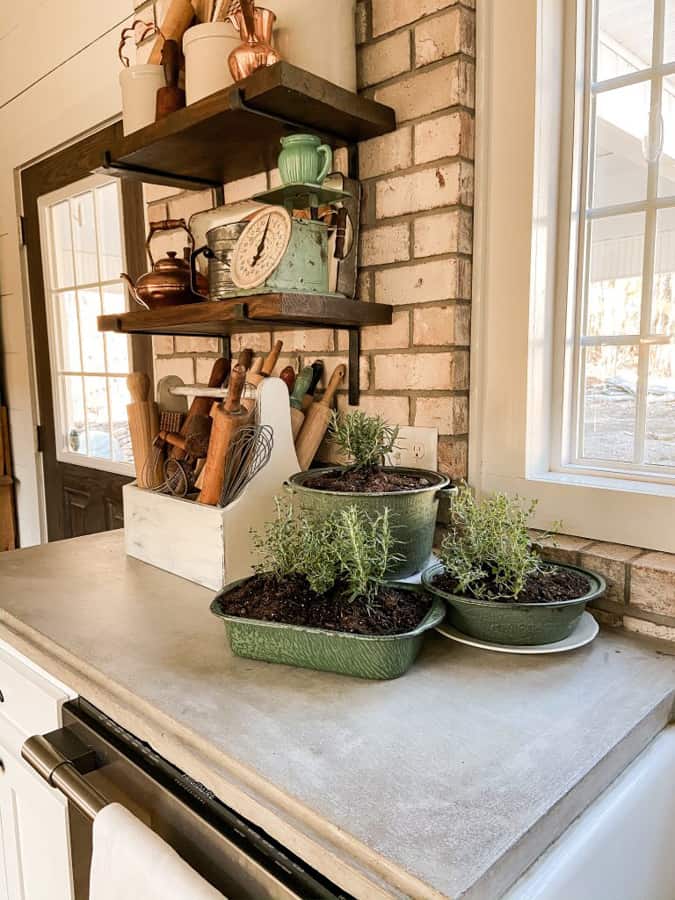
7 Best Reasons to Plant Herbs
- Cost: Fresh herbs are expensive to buy at the store. Growing your own can save you money in the long run. Unlike many plants, herbs are hardy and grow quickly once planted.
- Freshness: Fresh herbs have a much more intense flavor than dried herbs. Most herbs grow from spring to fall, so you have an abundance to cook with. Plus.. you can freeze and dry herbs to use out of season, and I’m sharing all the details today.
- Variety: There are many different types of herbs, each with its own unique flavor. Growing your own herbs allows you to experiment.
- Health benefits: Many herbs have medicinal properties. Growing your own herbs gives you access to fresh, healthy herbs that you can use to improve your health.
- Easy To Grow: Unlike many vegetables, herbs are very easy to grow. They are mostly disease-free and require minimal care.
- Beautiful plants: Herbs look stunning in your gardens and landscape. Plus… adding herbs to your floral arrangements looks lovely and provides a fresh, clean fragrance to your home.
- Garnish: Many herbs can be used to garnish and enhance your culinary efforts. Mint, parsley, cilantro, rosemary, and more look beautiful and are often added as a garnish.
My absolute favorite herbs to grow are Basil, Rosemary, and Sage. But I’m getting ahead of myself. Let’s get the list started first.

Top Ten Herbs to Grow and Why
The best herbs to grow depend on your personal preferences and climate. However, some of the most popular and versatile herbs include:
- Basil is a classic herb used in many different cuisines. It has a sweet flavor that pairs well with tomatoes, garlic, and olive oil.
- Cilantro is a flat-leaf herb with a fragrant, citrusy flavor. It grows best in cooler weather, so plant it in Spring and Fall.
- Dill is a flavorful herb that is often used in pickling and sauerkraut. It pairs well with fish, chicken, and vegetables.
- Mint is a refreshing herb that is perfect for adding a touch of flavor to tea, lemonade, and desserts.
- Oregano is a flavorful herb often used in Italian cuisine. It has a slightly bitter, peppery flavor that pairs well with tomatoes, garlic, and olive oil.
- Parsley is a versatile herb that can be used in savory and sweet dishes. It has a slightly bitter flavor that adds a nice touch to soups, stews, salads, and sauces.
- Rosemary is a hardy herb with a robust and piney flavor that pairs well with chicken, lamb, and fish. Due to its strong flavor, it is best used sparingly.
- Sage is a flavorful herb often used in poultry and stuffing dishes. Its strong, savory flavor can be overpowering, so it is best used in moderation.
- Chives are a mild, onion-flavored herb that adds a touch of flavor to salads, soups, and sauces.
- Lavender is an aromatic blooming plant that may help relieve stress, chronic pain, high blood pressure, and asthma.
Notable Favorites
- Thyme is a flavorful herb often used in Mediterranean cuisine. Its warm, earthy flavor pairs well with chicken, lamb, and vegetables.
- Tarragon is a flavorful herb often used in French cuisine. Its licorice-like flavor pairs well with chicken, fish, and eggs.
How To Keep Plants Producing All Summer: Deadheading
Herb plants are each different when it comes to deadheading, and here are some tips for ensuring that you have lots of produce from these plants. Some plants will become spent if allowed to flower while others thrive. Here are the plants you want to deadhead as soon as or before you see them begin to flower. Most herbs will thrive on frequent harvesting. Two exceptions are Sage and Lavender.
- Basil – The more your harvest, the more it grows. Don’t let it flower if possible.
- Mint – will become leggy and not look good in your garden. Harvest often and avoid flowering.
- Parsley – Remove leggy stems as soon as they appear.
- Cilantro – Keep pinched back to create a low-to-ground plant.
- Oregano – Pinch back blooms
- Dill – unless you are preserving the seeds for pickling.
- Chives – only deadhead after the blooms are spent.
- Rosemary – Although it doesn’t flower, be sure to harvest and keep the plant under control. It can grow rapidly and become woody.
Annual Herbs to Plant
Annual herb only grow for one season and must be replanted every year. So, let’s take a look at which of the favorite herbs to grow will need replanting seasonally.
Basil is my favorite herb, and I’ll be sharing why in a moment. A basil plant will provide an abundance of leaves from spring through fall if not allowed to flower.
Cilantro is a warm-weather herb that is only harvested once. It is best for Spring and Fall gardens. Once Summer arrives, the cilantro season is over.
You may get some new growth from seeds that drop. However, don’t depend on it.
I love fresh cilantro, but it’s less cost-efficient to grow than most other herbs. Fortunately, it’s also the least expensive herb to purchase.
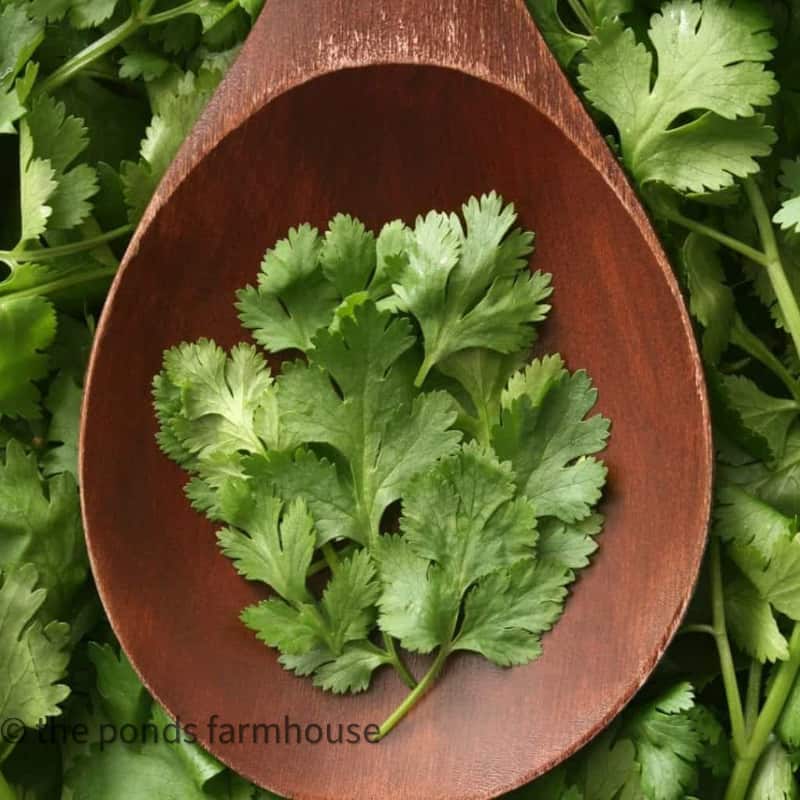
Perennial Herbs to Grow
The majority of herbs are perennial, and therefore, once established, you will have fresh herbs at your fingertips year after year. Obviously, perennial herbs are the most cost-effective.
Dill is a favorite herb to grow because it is a tasty addition to many recipes. I love using fresh dill for fish and dill dips and sauces.
It is a warm-season herb, and even a light frost will be too much for this delicate plant. Therefore, be sure to preserve some for winter.
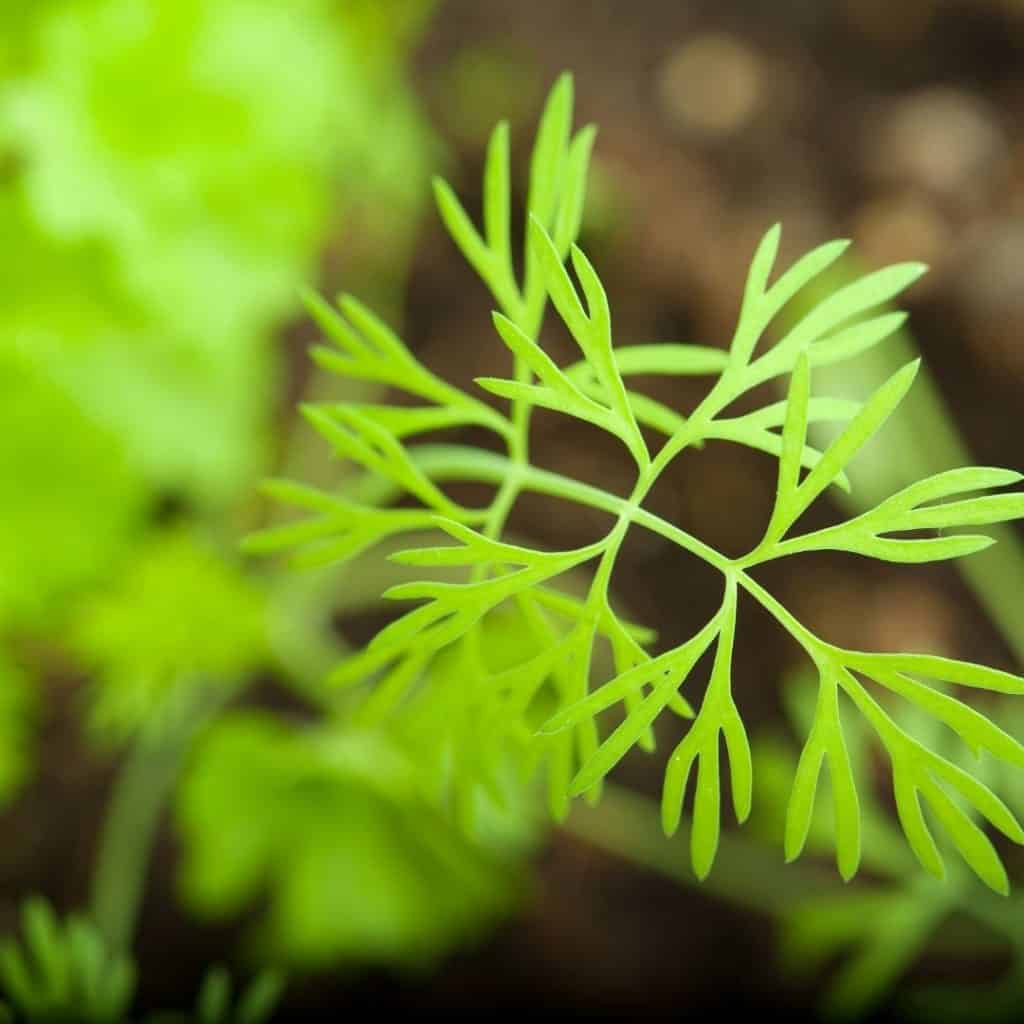
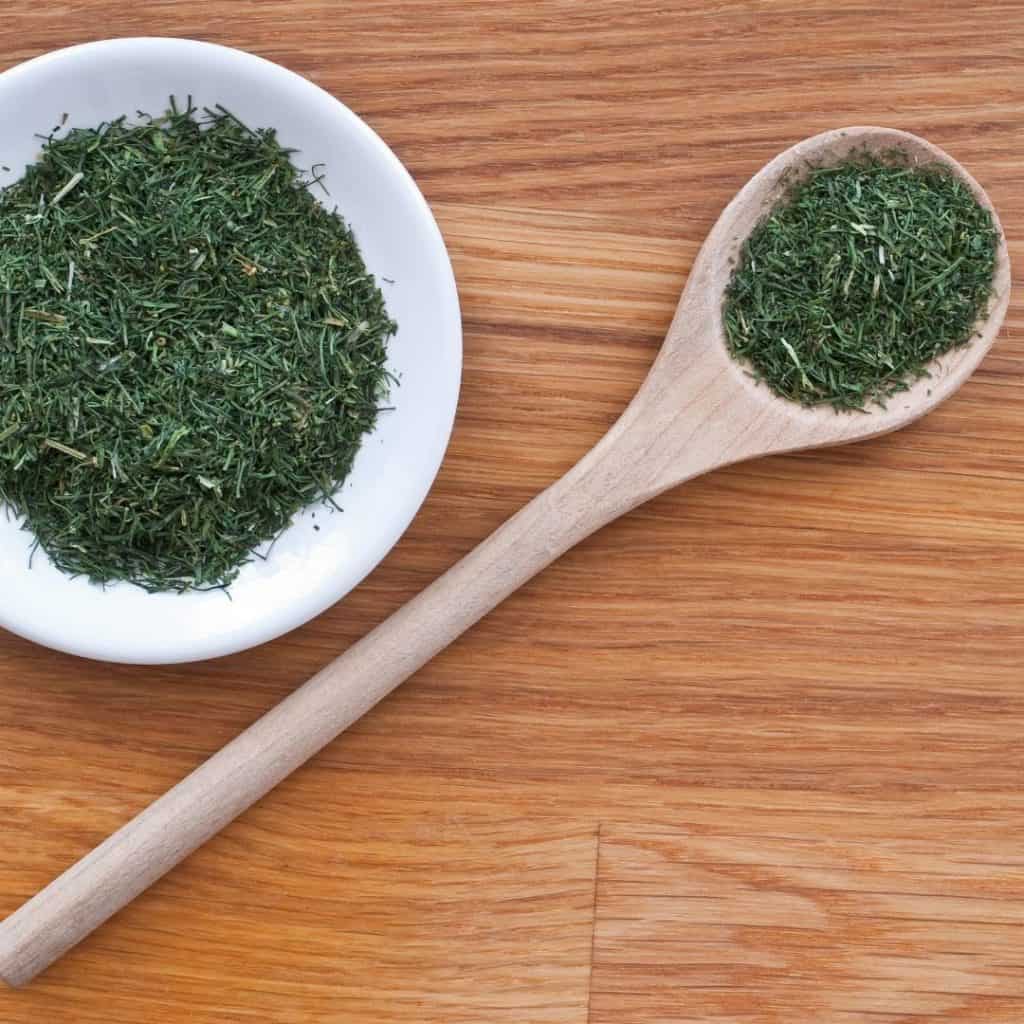
Dill will come back next spring but can quickly turn to seed if the seed buds aren’t pinch off. You may want your plant to turn to seed to be used for pickles, etc.
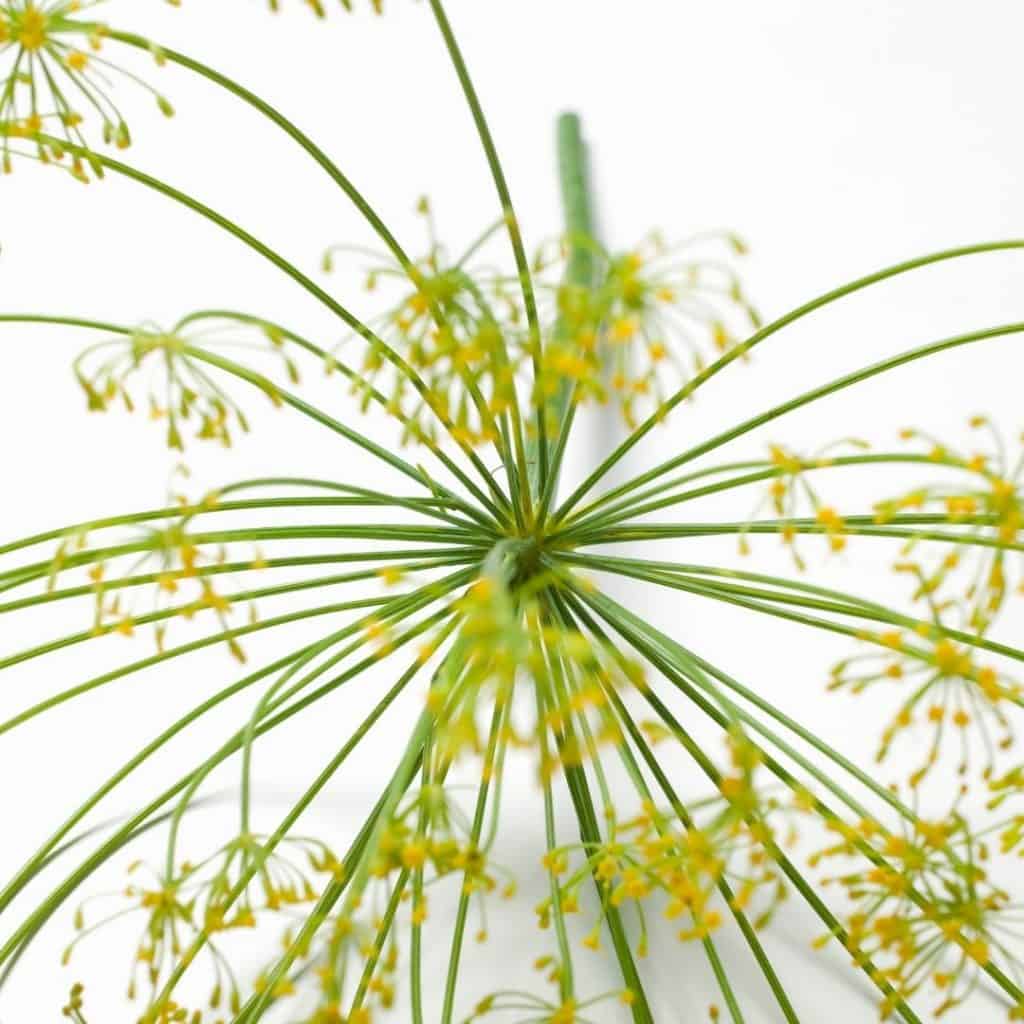
If the original plant drops seeds, you will see little plants popping up all around the original plant. Therefore, you can enjoy dill all summer.
Mint is a great herb to plant and we have it growing in several areas of our landscape. It spreads rapidly and therefore, can be very hard to control.
It is great for making Peach Mojitos and is great for garnishing your other dishes all summer long.
It’s a natural mosquito repellant and an excellent herb to plant next to outdoor entertaining areas.
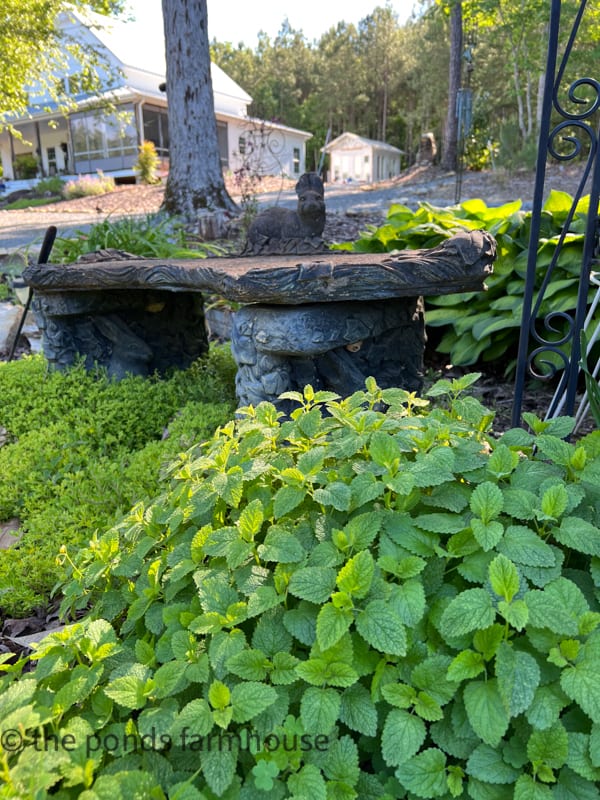
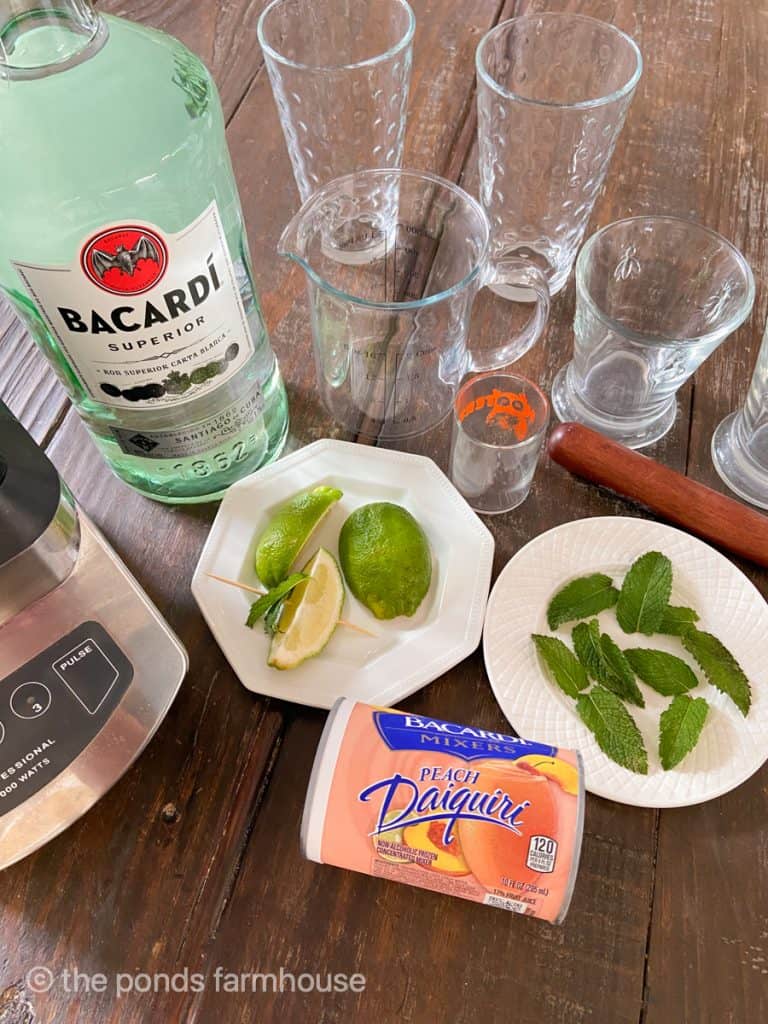
Oregano is a perennial that comes back year after year. In milder climates, it can continue to produce during winter months.
Parsley is a biennial, which means it will come back a second year before going to seed.
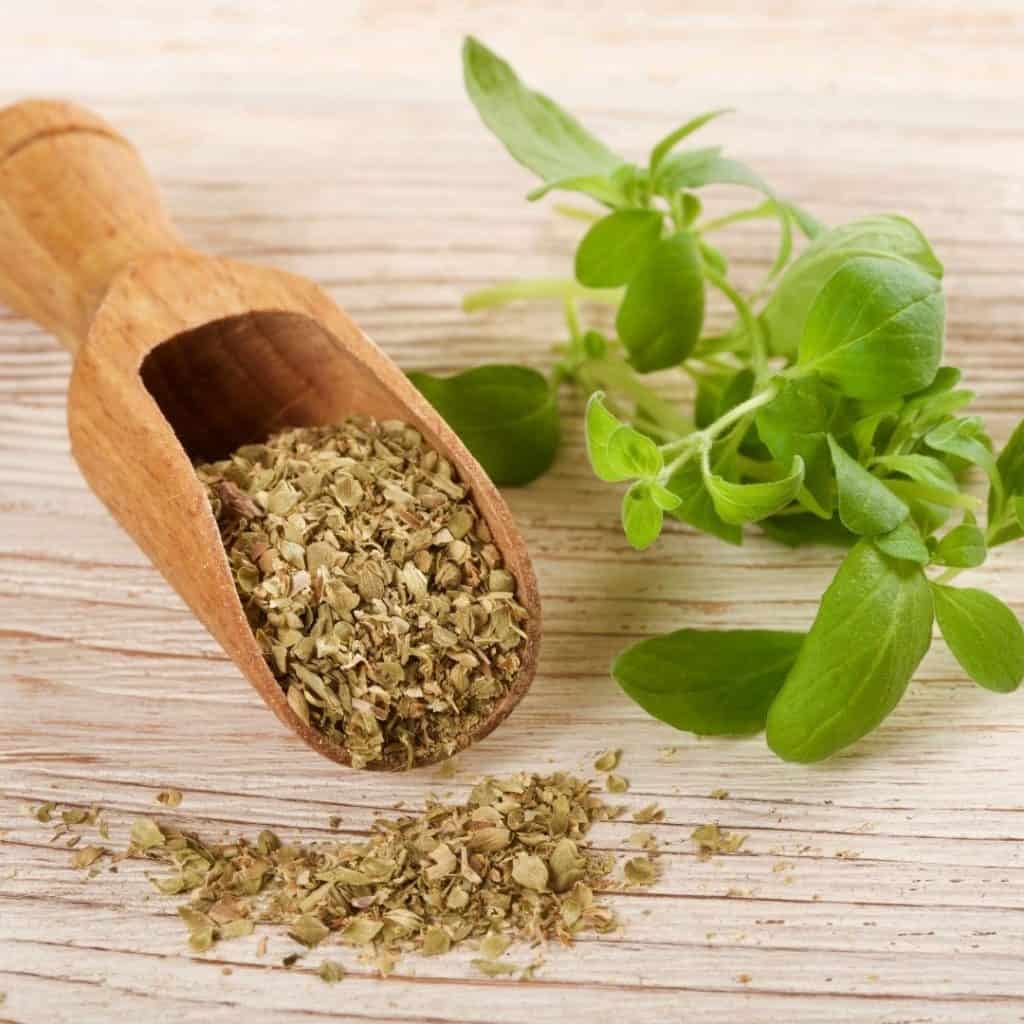
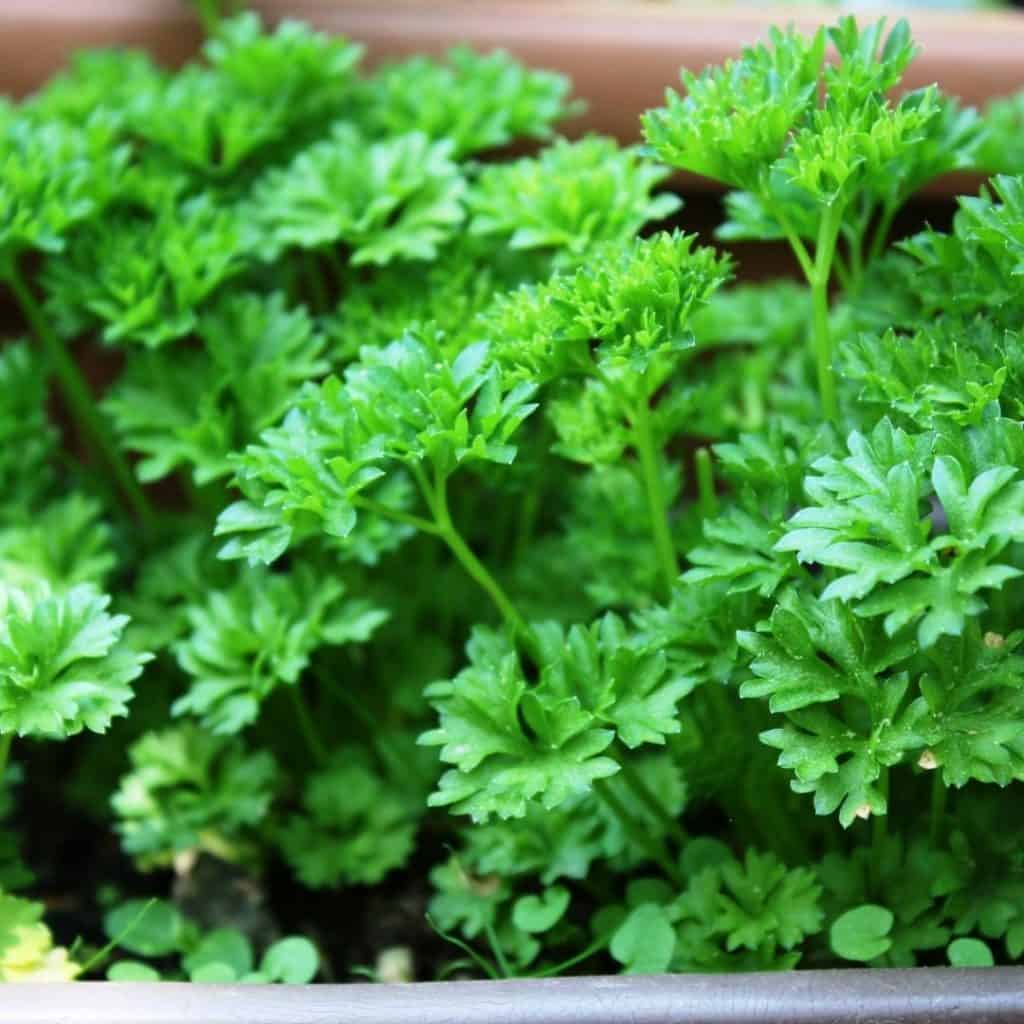
Rosemary is a beautiful herb to plant in your garden because it survives most winters and can be used all winter. See why it’s in my top 3.
Sage is beautiful in the garden. Read more below.
Chives will also survive milder winters and are an excellent substitute for shallots in a pinch. They also have beautiful blooms in the Spring.
See this refreshing Fresh Herb and Cucumber Dip Recipe.
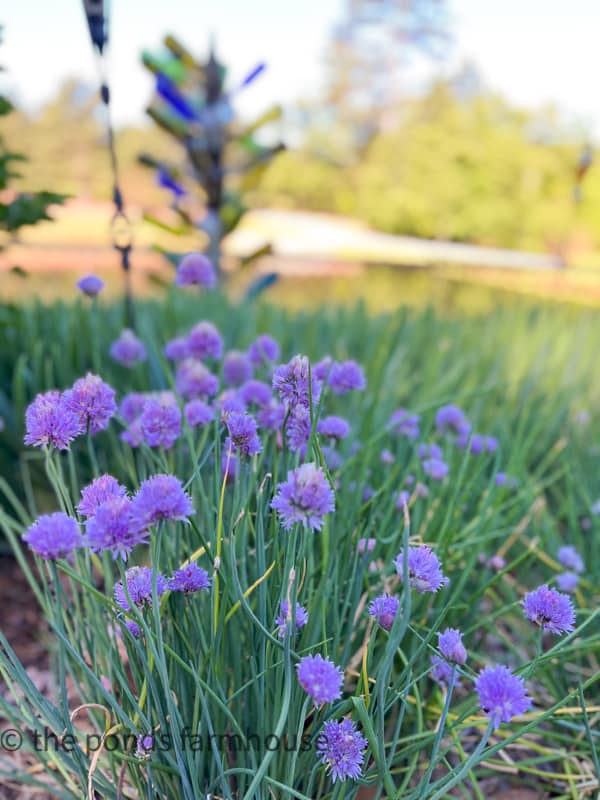
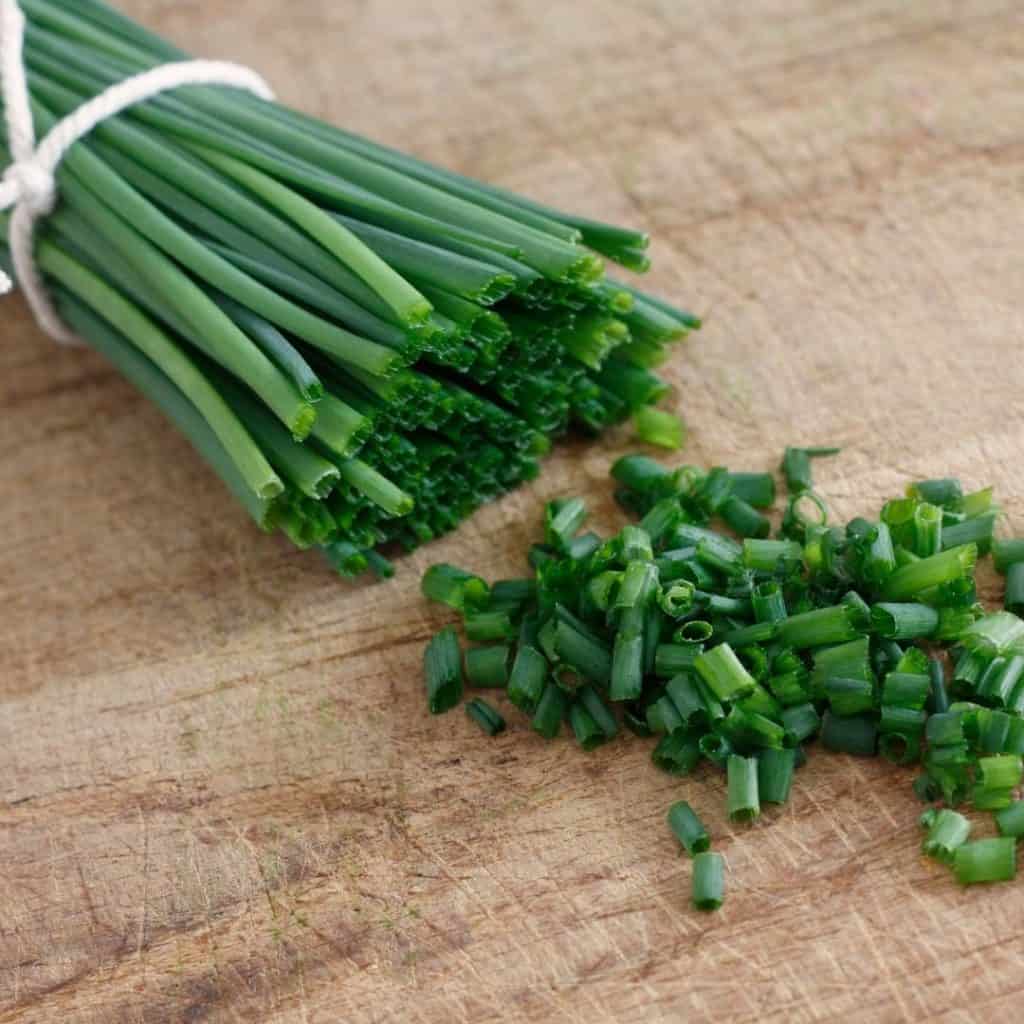
Lavender is so beautiful and, once established, that will produce every year, according to the experts. I’ve personally not had great luck with lavender, but I’ll give you a secret tip if I ever figure it out.
It is a great ornamental herb with fantastic health benefits.
I’m leaving it in my top 10 because I really want a garden full and have faith that I’ll figure it out. Thanks in advance for any tips.
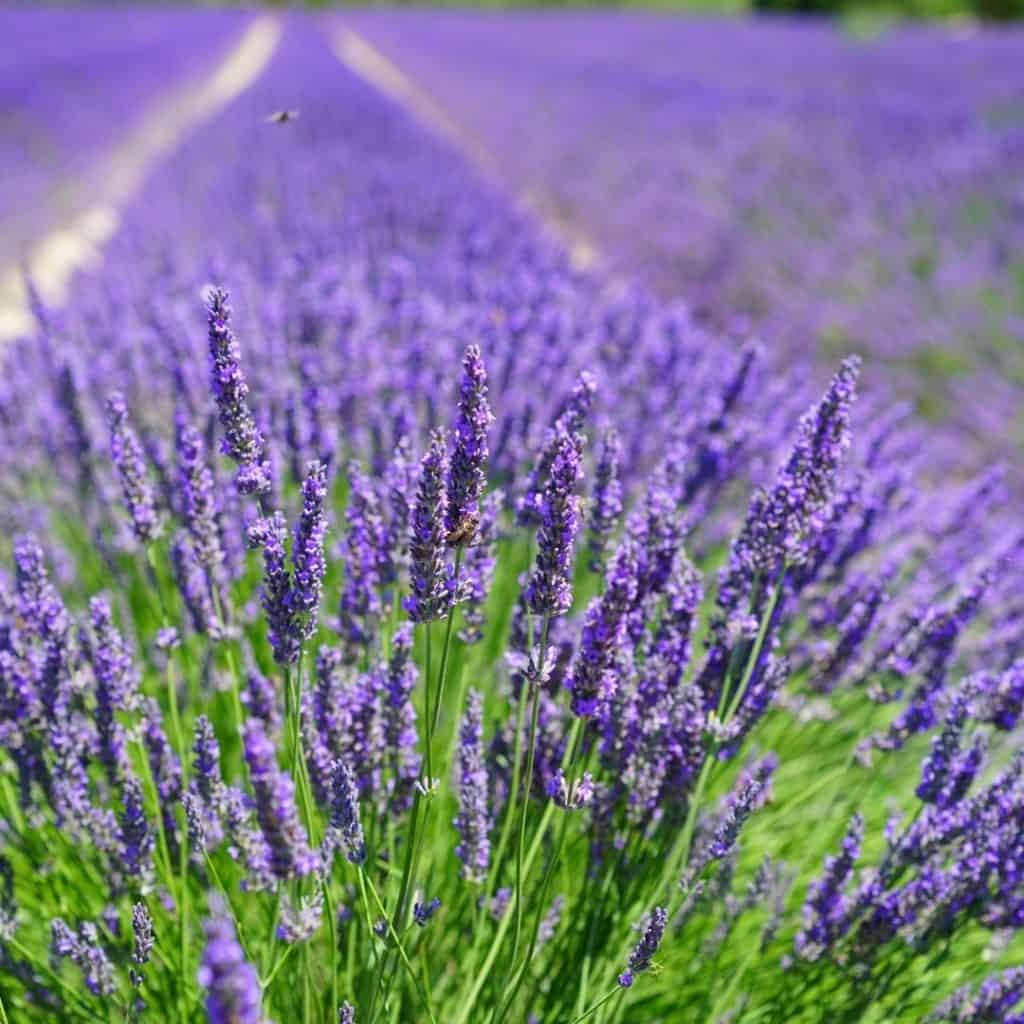
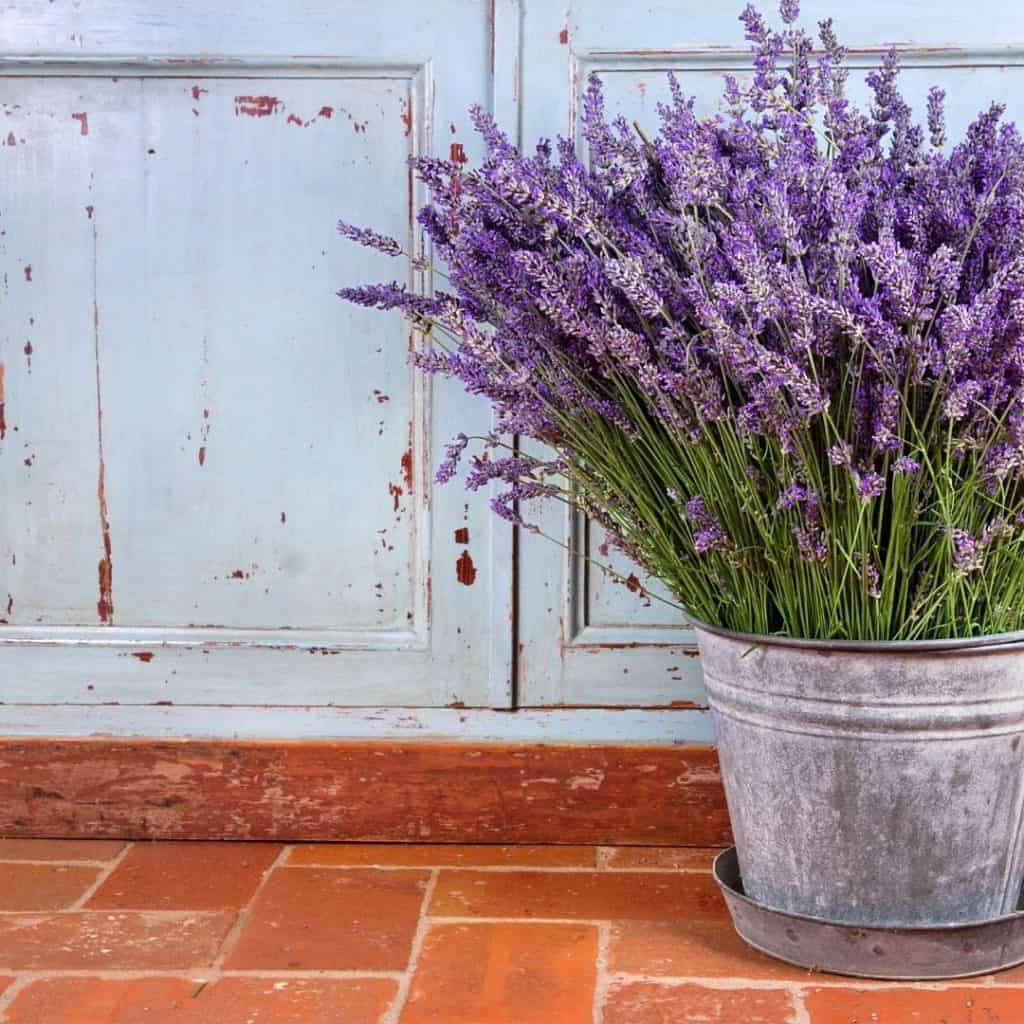
Tools and Supplies for Herbs
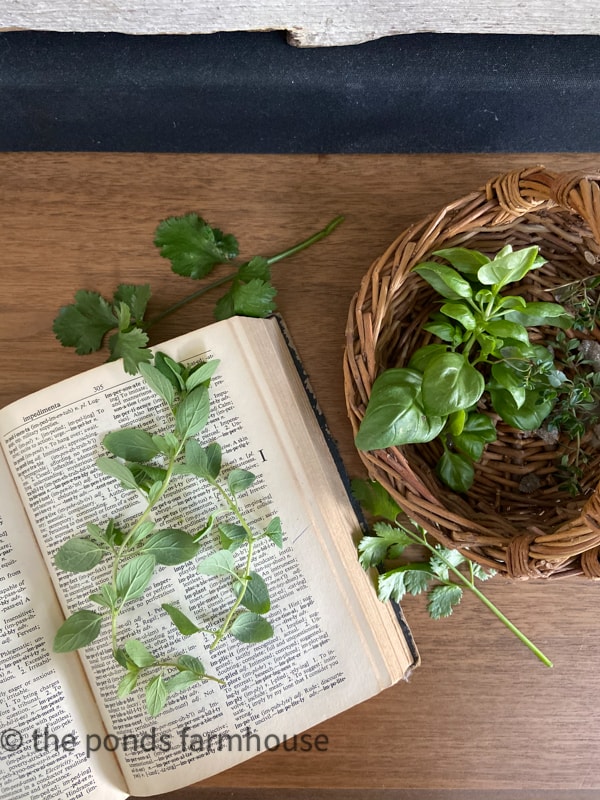
My Three Favorite Herbs To Plant
Basil, Sage, and Rosemary are all herbs that I have great success with. These are my three favorite herbs to plant, and each one for different reasons.
Basil
Although you have to re-plant Basil each spring, it’s still a wonderful herb to have in your garden.
Basil is easy to grow and doesn’t require much attention.
The main thing you want to do with basil is harvest it often. Don’t let it flower.
If you see a flower starting, pinch it off immediately. The more you harvest your basil plant, the better it will grow. What’s not to love about that?
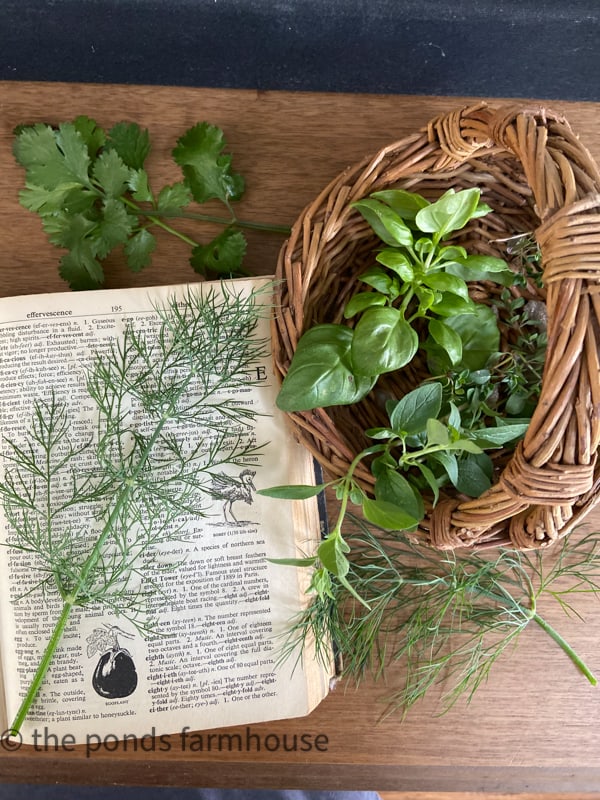
Basil will produce all summer long. It is the main ingredient in my favorite Basil Pesto Recipe. In addition, basil is wonderful for Caprese Salads, especially when fresh tomatoes are in season.
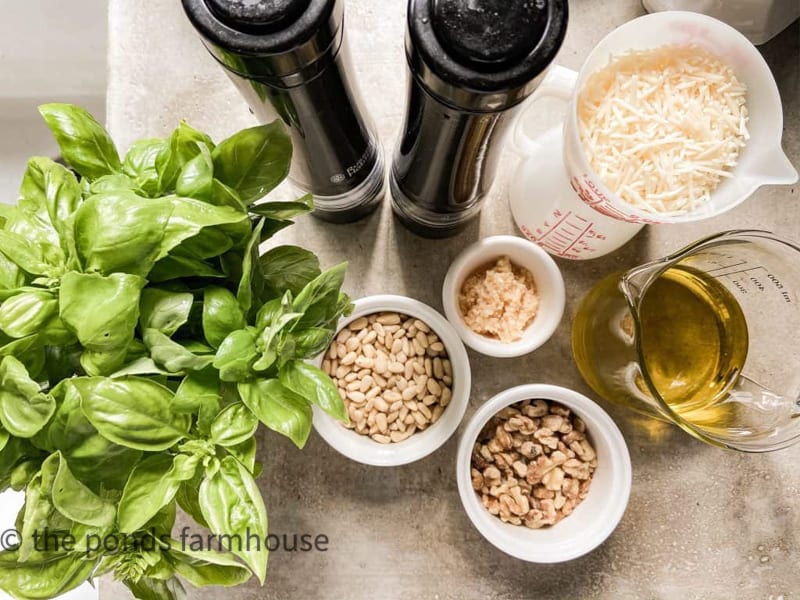
Sage
I rarely use sage for seasoning; however, I love it in my garden. It is a great ornamental herb with the most beautiful blooms in the spring.
In addition, it smells great when added to floral arrangements and my Christmas Garland.
It shows up big time in the Spring with these beautiful purple blooms and once they are gone, the leaves are a soft silvery green.
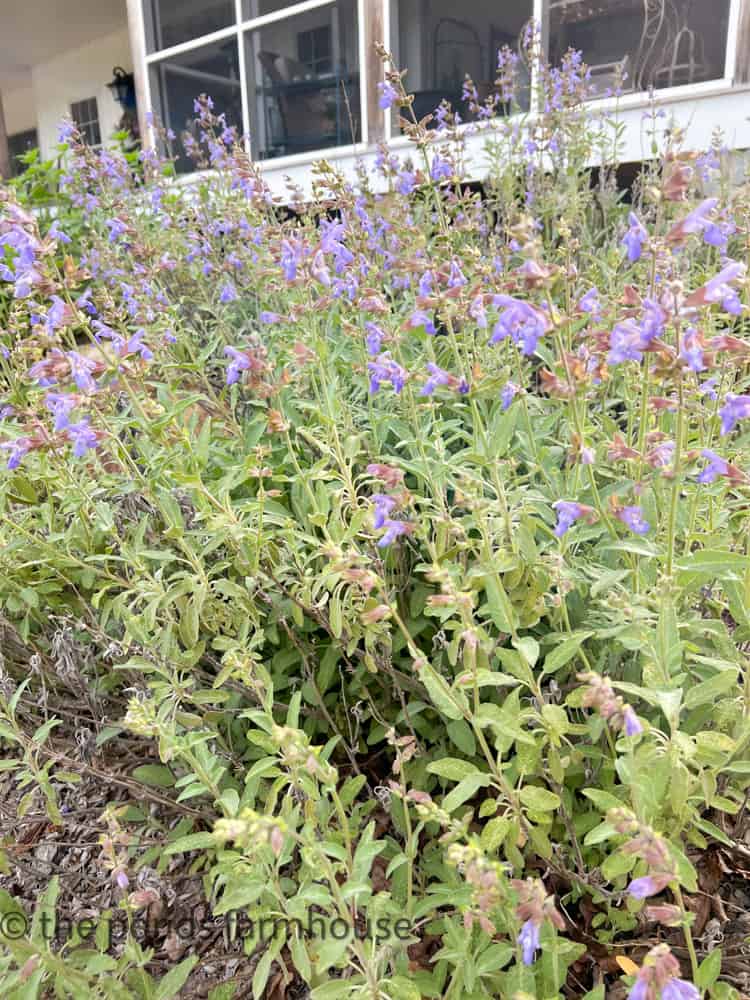
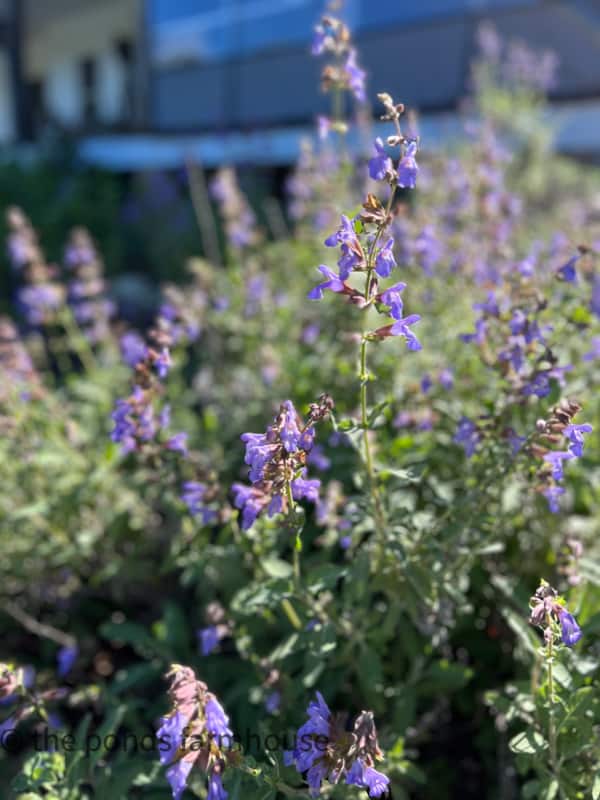
I gather Sage and Rosemary each November for a holiday to make aflow Dried Fruit and Herb Garland.
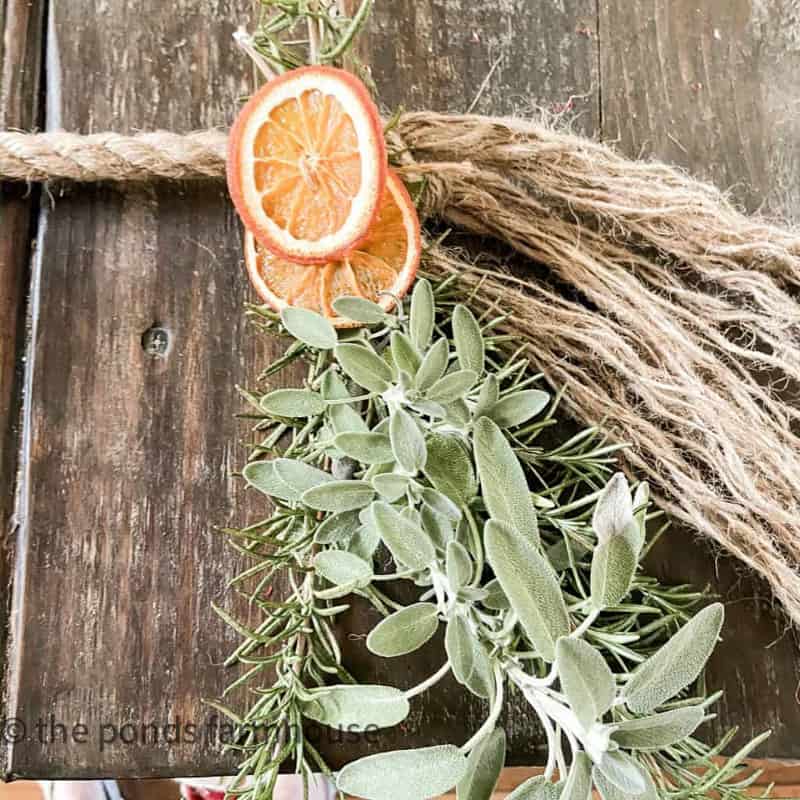
Rosemary
Just like sage, Rosemary isn’t my favorite herb to cook with. However, it is a favorite herb to plant because it is beautiful, smells delicious, and is available all year in my garden.
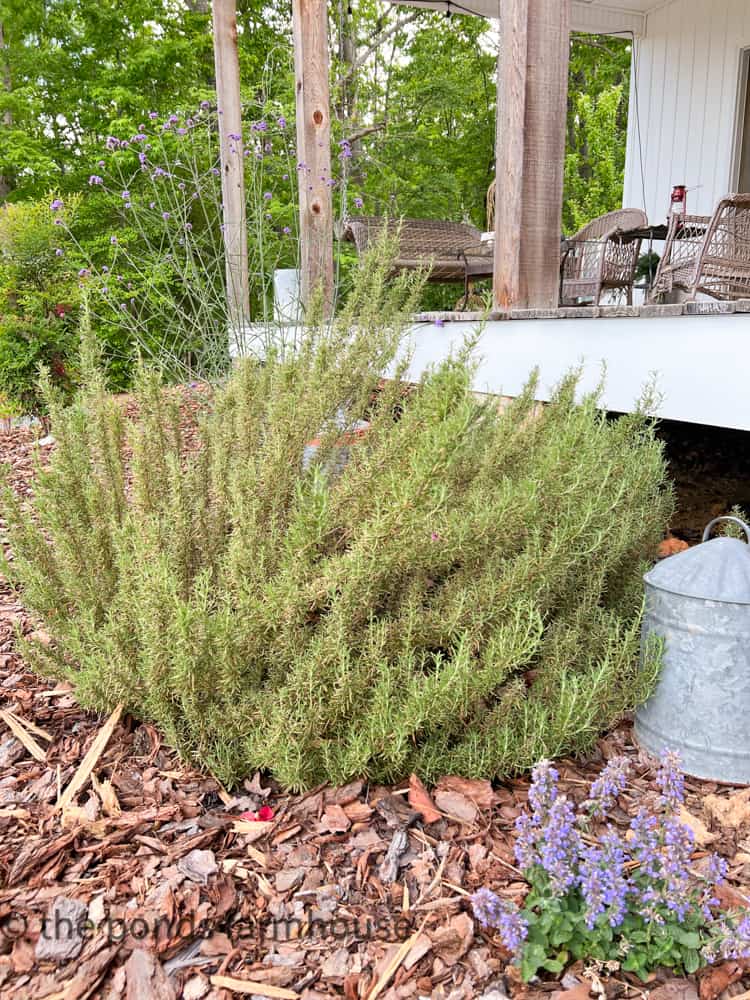
I personally love using rosemary to mix with fresh flowers.
Sprigs of Rosemary fill in around the hydrangea arrangement & both Rosemary and Sage add a green touch to the Black Eyed Susan arrangement.
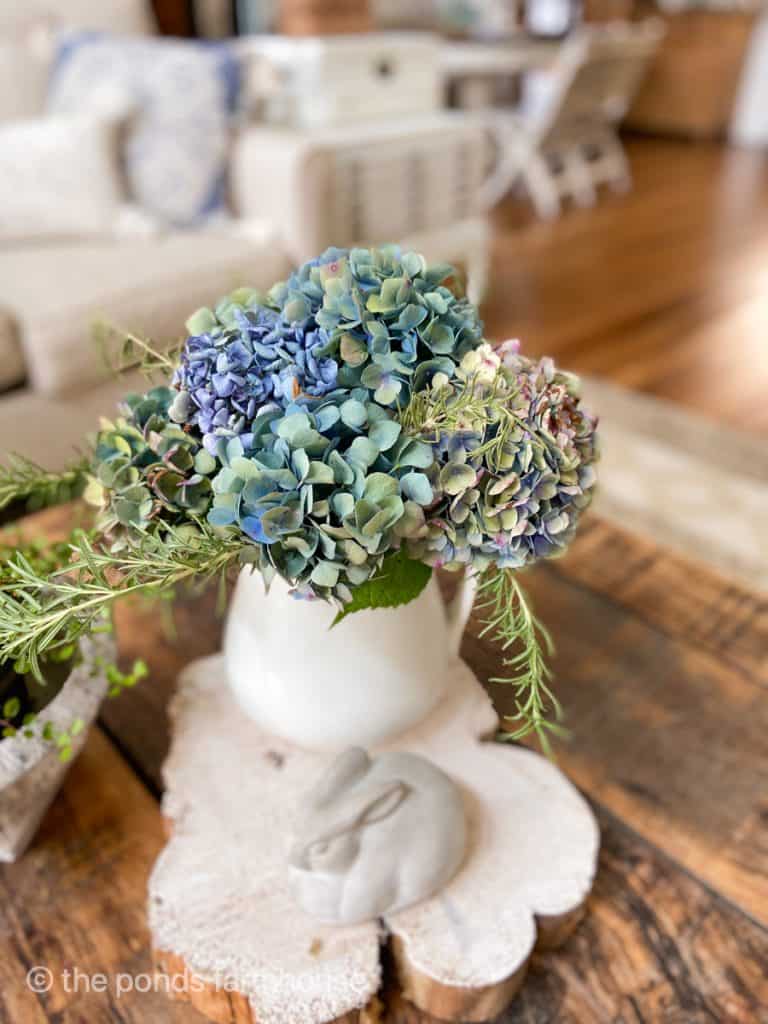
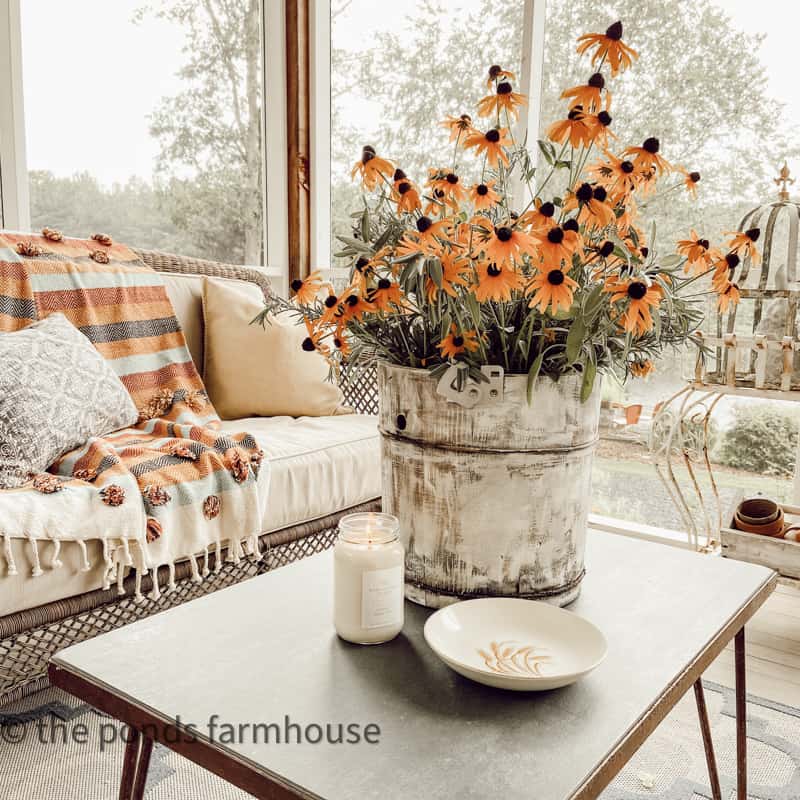
When guests arrive, I always cut several sprigs and add them to bud vases throughout the house. Rosemary and Sage add a wonderful fresh scent to the kitchen.
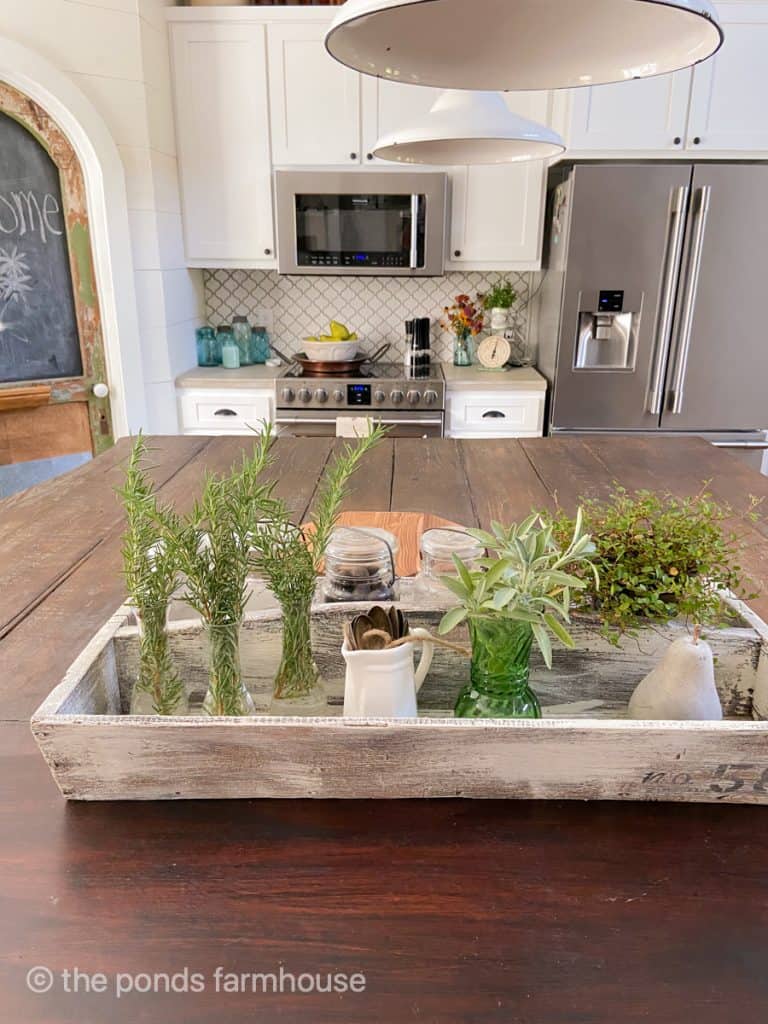
Rosemary, Parsley, and Dill as well as many other herbs, are great for garnishing your dishes.
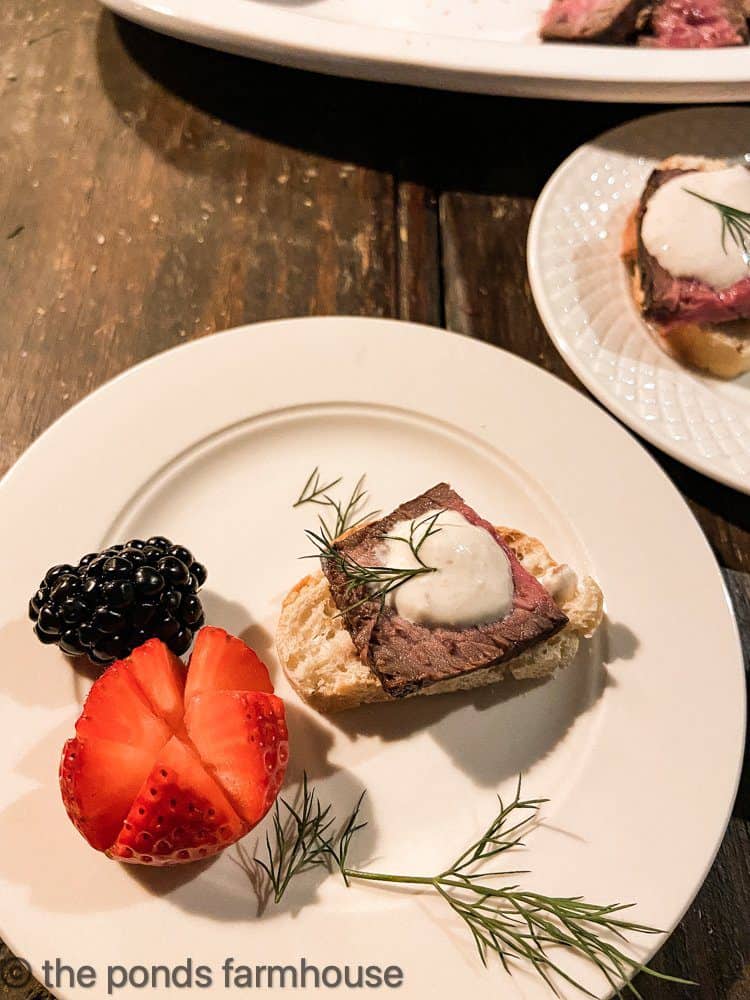
Dry or Freeze Herbs For Winter Use
Most herbs can be preserved for use during the off-season. You can add preserved herbs to soups, salads, etc., during the winter. Read tips for Drying Herbs with a section on freezing as well.
Some perennials will survive a mild winter and therefore, you may not need to preserve them.
However, I’m in zone 7b, and some herbs survive the winter but there’s no guarantee.
Basil will not survive the winter and must be replanted each Spring. Dill will die during the winter; however, you’ll see new volunteer growth next Spring.
Frozen basil is excellent added to soups or chili recipes during the winter. See more details on preserving herbs for off-season enjoyment.
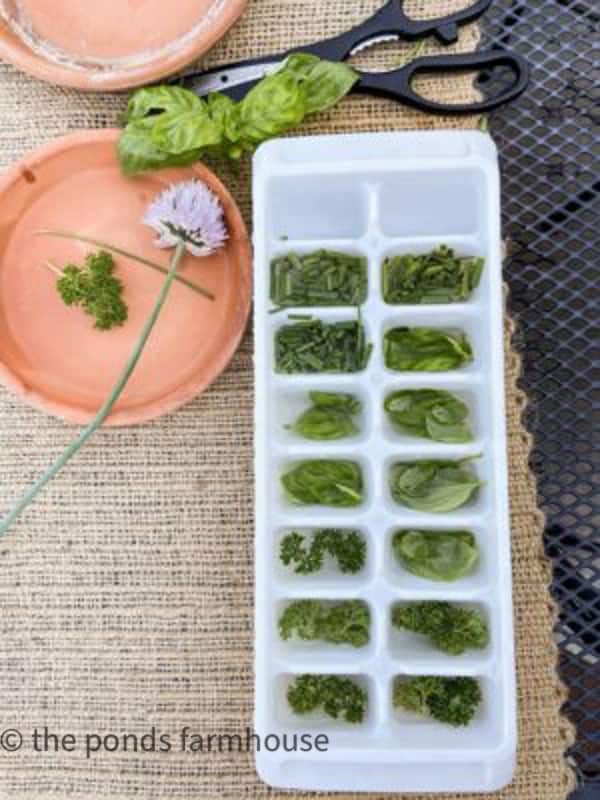
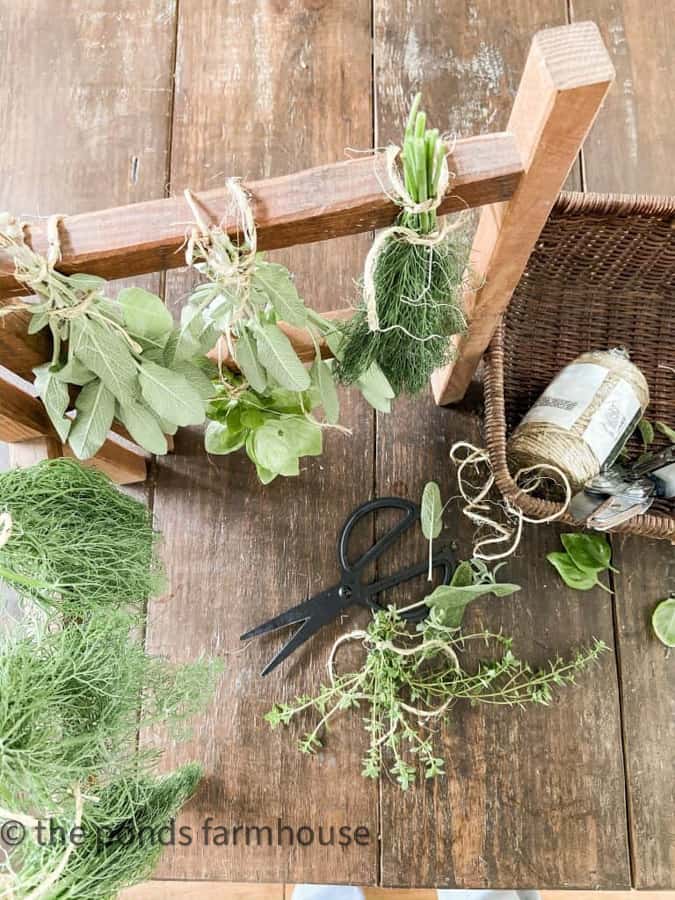
Check out this easy DIY Herb Drying Rack for a rustic but decorative way to dry your herbs.
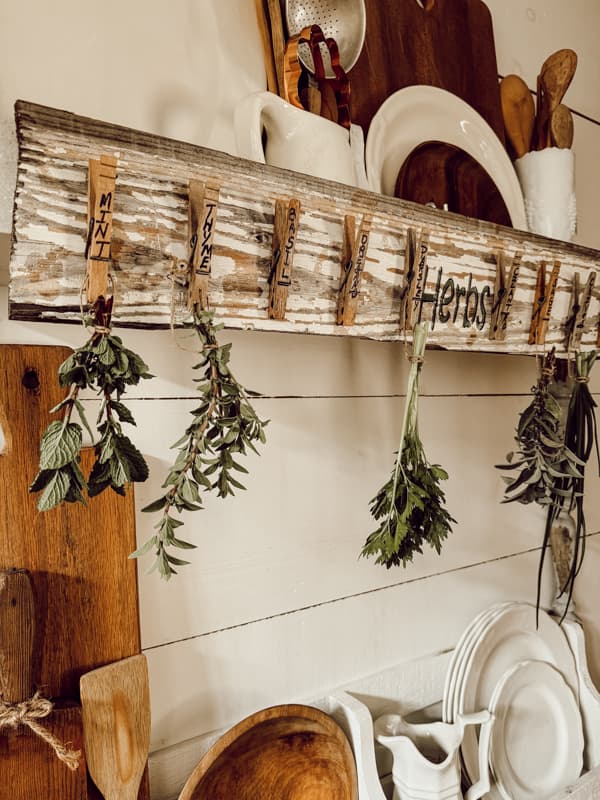
In addition to creating floral arrangements, delicious recipes, and yummy spices, you can see how to use your fresh herbs to make Botanical Art and Free Herb Centerpiece ideas.
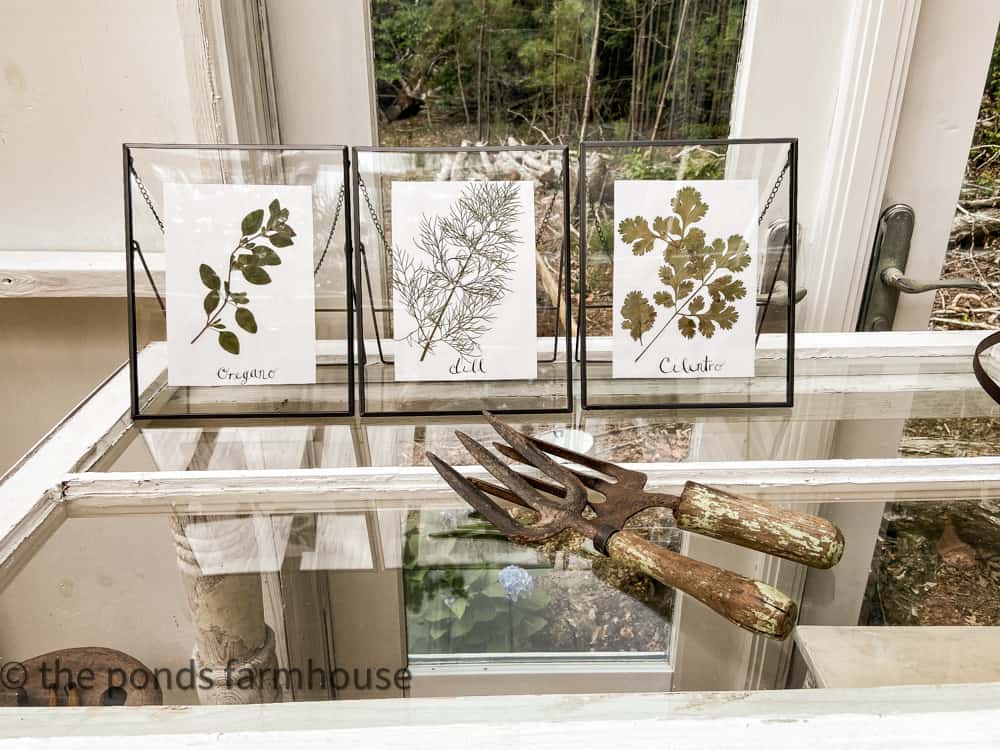
You may also enjoy making a flower and herb press to preserve herbs. The flower press tutorial is made using scrap wood and is super easy to make.
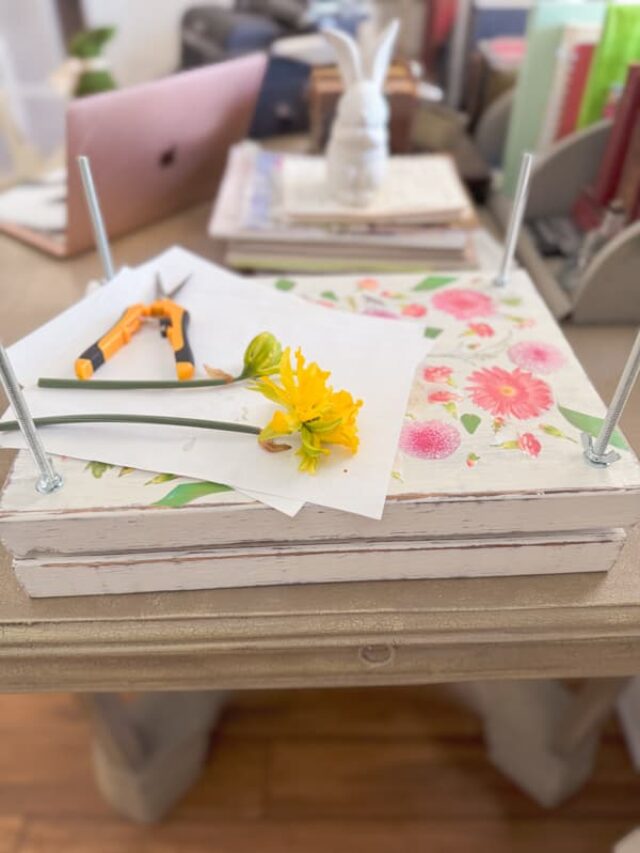
I hope you enjoyed learning more about the 10 Best Herbs to Grow and Why!
Thanks for stopping by and I look forward to sharing my next adventure with you.

Pin It To Remember It
Did you find some great ideas you’d like to save for future reference? Hover over the images you’d like to save and pin to your favorite Pinterest Boards when you see the PIN button.
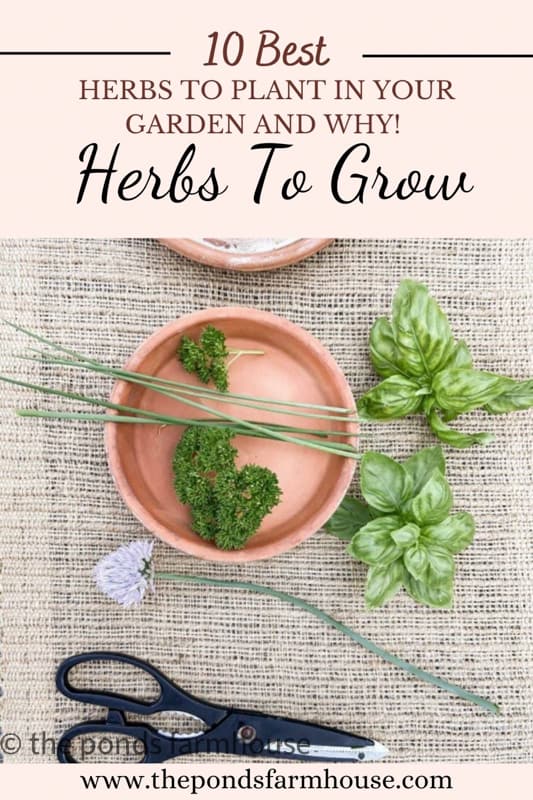
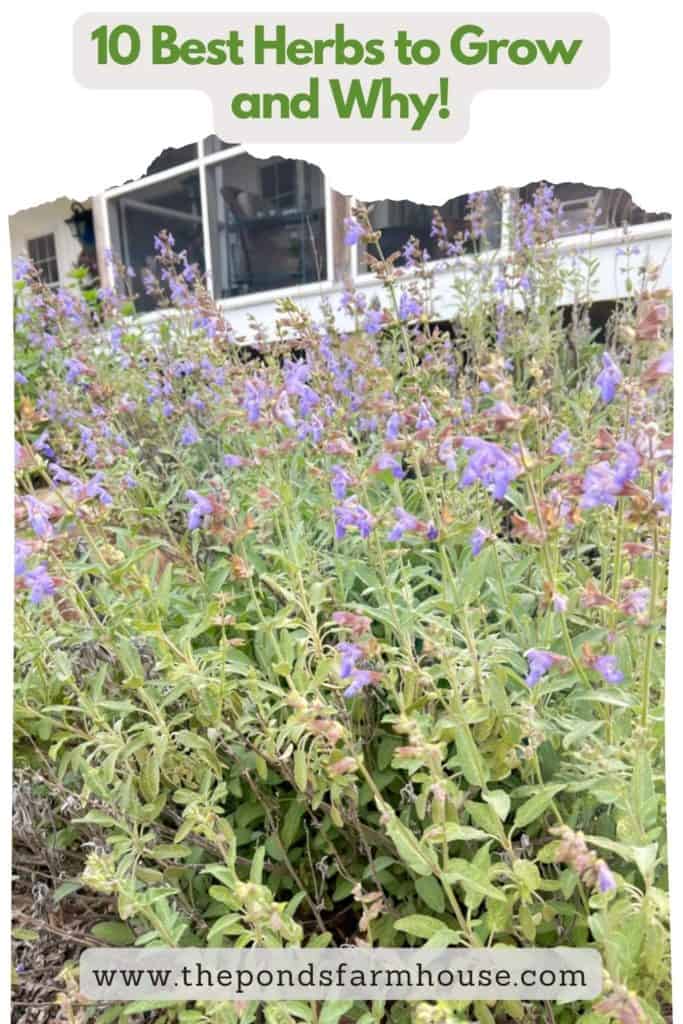
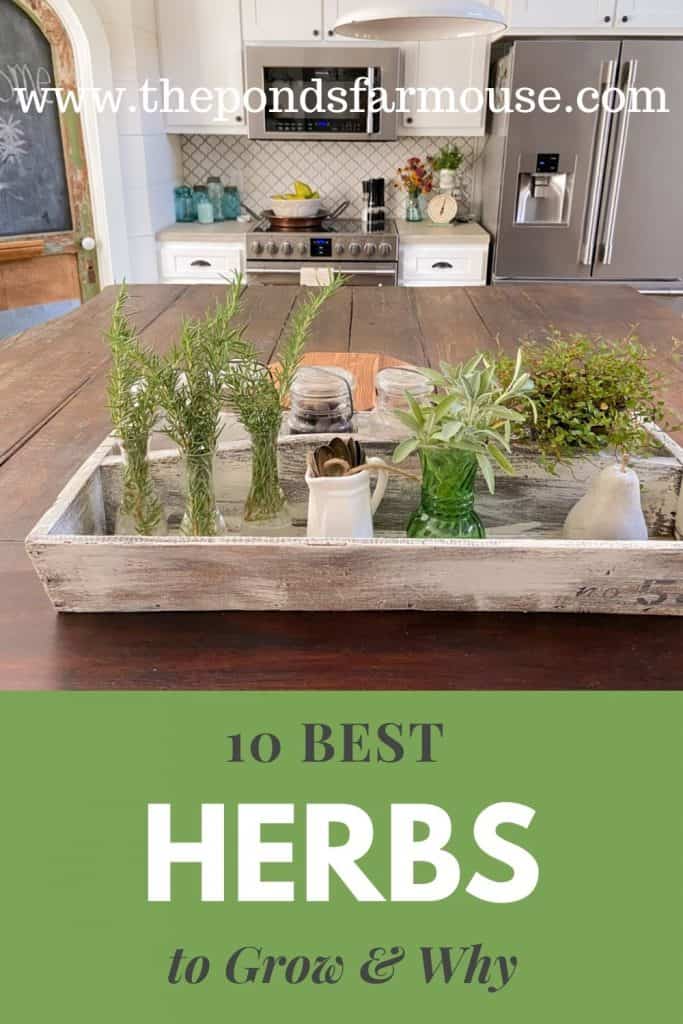

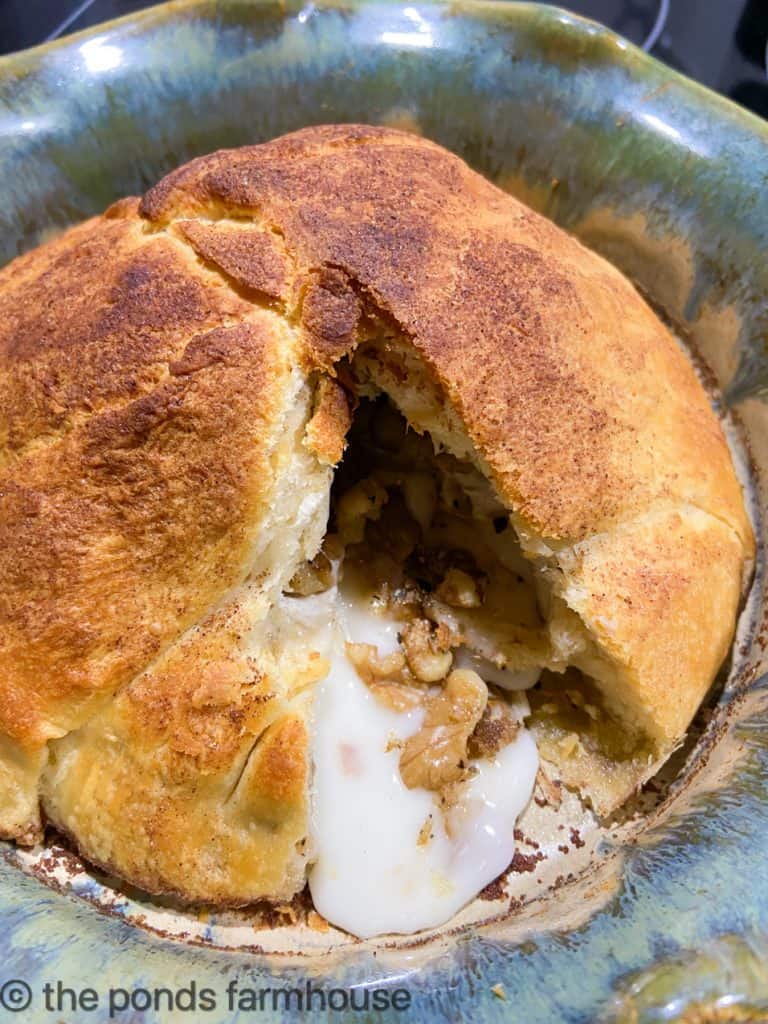
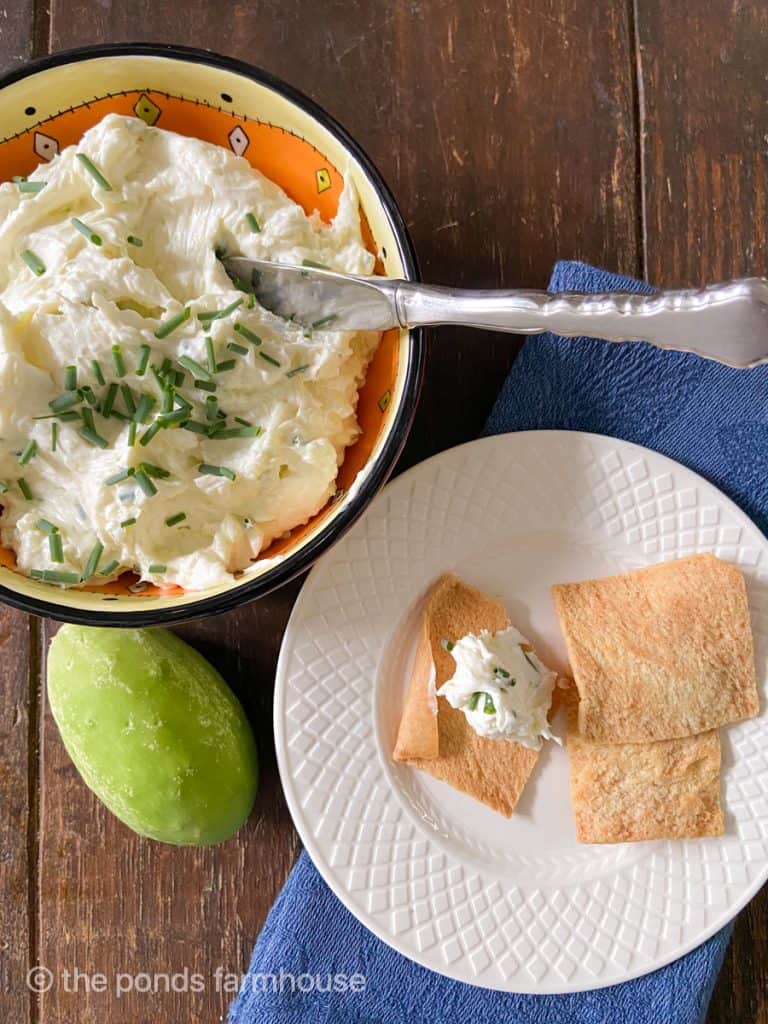
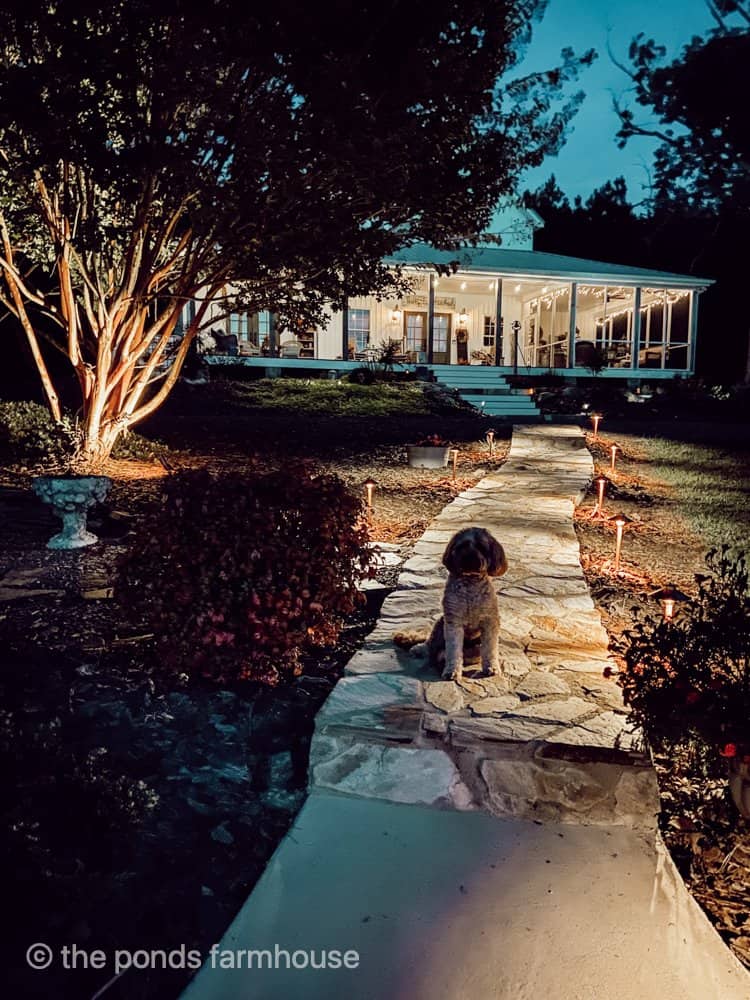
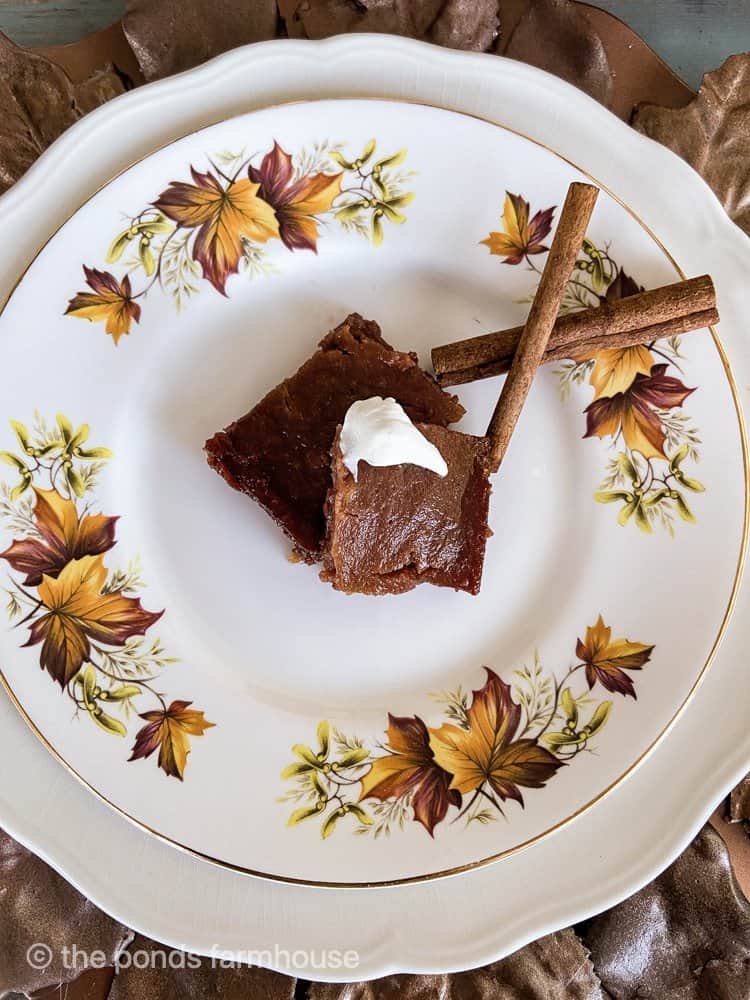

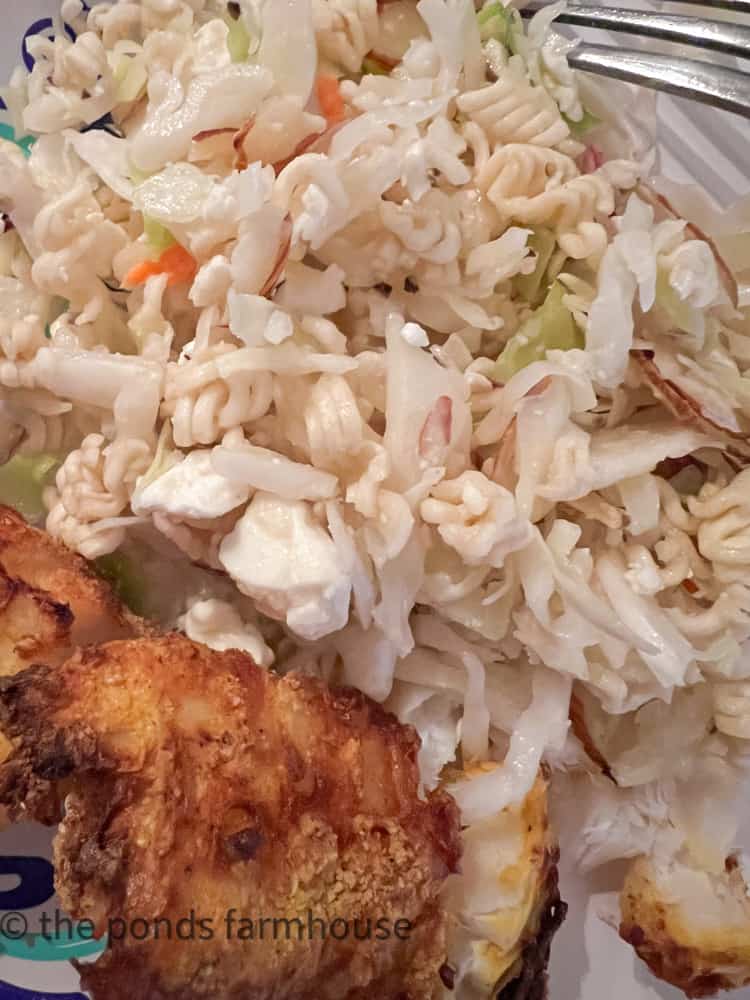
Herbs are so fun to grow! I love using them in my dishes as much as possible!
Rachel,
Lavender needs well drained soil and no watering. It comes from the Mediterranean region. We get lots more rain than that area. They don’t want or require watering.
Parsley is one of my favorites because of the Black Swallow tail butterfly!
This butterfly lays caterpillars on parsley, they eat parsley, split.and the Black Swallow tail
Butterfly is hatched and if you grow parsley you contributed to Black Swallow tail butterfly.
They need your help. Great teaching lesson for children.
They arrive on my plants, in Delaware, about August 1. The process doesn’t harm the parsley plant. Hose off and it will continue to grow. Enjoy the process!
Oh, that’s what I’ve been doing wrong for sure. Thanks so much for the tip. I didn’t know that about parsley. I have it growing in my landscape and this past spring I’ve never seen so many butterflies. Maybe that’s why. Again, I appreciate your input and help.
Stacy,\
Thanks for stopping by. I use herbs so much.
Lavender is a difficult plant. One day it is beautiful and next day it is half dead. It doesn’t’ like fertilizer and no wet feet. Unfortunately, I have it planted close to plants which need water so I sacrifice some of the lavender to get to the plants who need watering.
Great article about herbs. The pictures are beautiful.
Have a wonderful “rest of summer”.
Thank you for all you do to bring beauty to us.
Diana,
Thanks so much for your tips. I believe I’m over watering. Will keep that in mind for my next attempt.
@diana, don’t prune in fall
Prune back in spring
I love the smell of rosemary! Thanks Rachel for all the important information on herbs that I didn’t really know!
Margie,
I’m no expert but I do love having herbs at my fingertips.
Thank you for this post…I grow a few herbs and your tips will help me to try a
few more. Love the pics.
Oh I’m so glad. Thanks for stopping by.
Rachel your photos are amazing
Ann,
Thanks so much for stopping by today.
Hi,
One great use for sage. I cut up sage leaves n mix w garlic and pepper and cook in olive oil to throw over butternut squash ravioli. Delicious! Your right, love the smell also. Great tips! Thx!
Janet
Janet,
Thank you so much for that great tip. I appreciate you for stopping by.
Great tips, Rachel! There is nothing like fresh herbs in cooking, is there? I love being able to just step outside and snip a little of whatever I want! I have never really stored them, living in Florida, they are available for me to snip year round!
Chloe,
Several of mine will survive in NC if it’s a mild winter but if not, I have to have some dried or frozen for the off season.
This is such a fantastic roundup of herbs to plant, Rachel! I’m totally with you on the lavender. I love it so much and one day hope to have an entire garden full. I think we could make it work with the sandy soil but all the rains from hurricane season would mess it up every year. That doesn’t stop me from buying it though Can’t wait to try your helpful tips and tricks! Loved and pinned, CoCo
Can’t wait to try your helpful tips and tricks! Loved and pinned, CoCo
CoCo,
Thanks for all your sweet comments. I appreciate you stopping by
Rachel, what a beautiful and inspiring post!! Just seeing your gorgeous images made me so happy. Thank you!
Carol,
I really appreciate this.
I love growing herbs too! Great post!
Stacy,
Thanks so much.
This is a great list, Rachel. I grew herbs for the first time last year and it was so much fun. An unexpected bonus is we attracted some caterpillar friends and got to watch them morph into beautiful butterflies. It was such a neat experience. I’m going to use your list to branch out and try a few new things this summer. And I’d to share it with my readers tomorrow for my week in rewind recap.
Oh, it really does bring out the Butterflies at certain times of the year. They are some many and so beautiful!
Thyme?
Rachel, I always forget to freeze fresh herbs for the rest of the year. Such a great idea and I love the herb botanicals too. You are just one of the most creative people I know! Thanks for sharing all your great tips.
Mary,
You are so kind and I appreciate the encouragement and support.